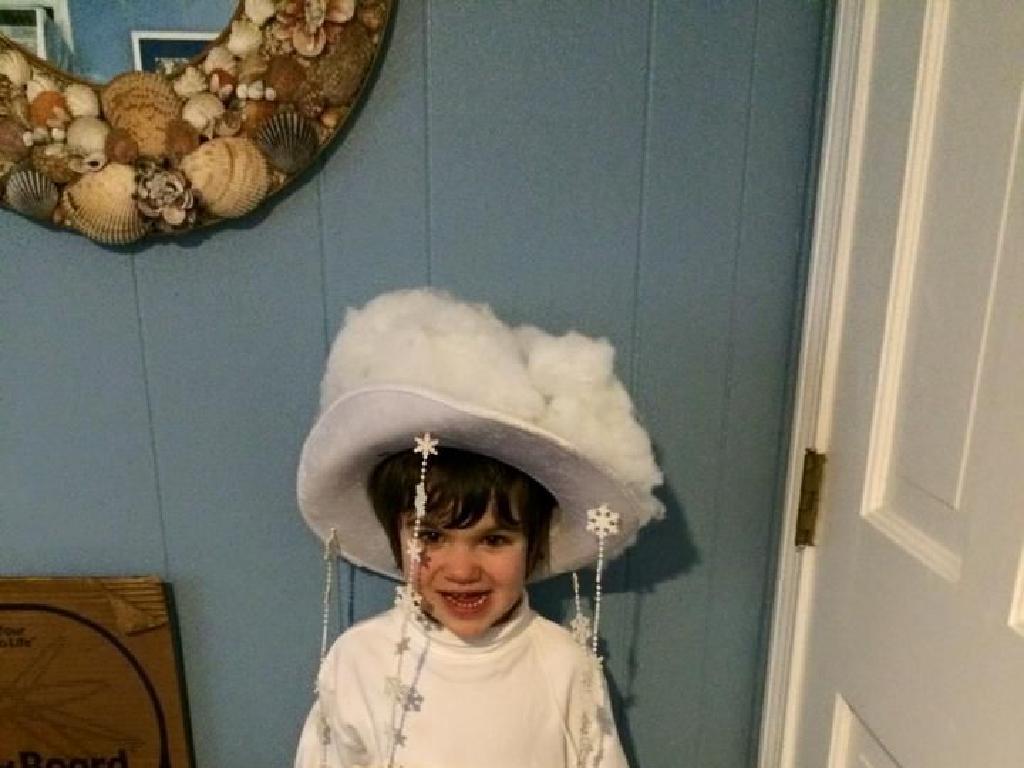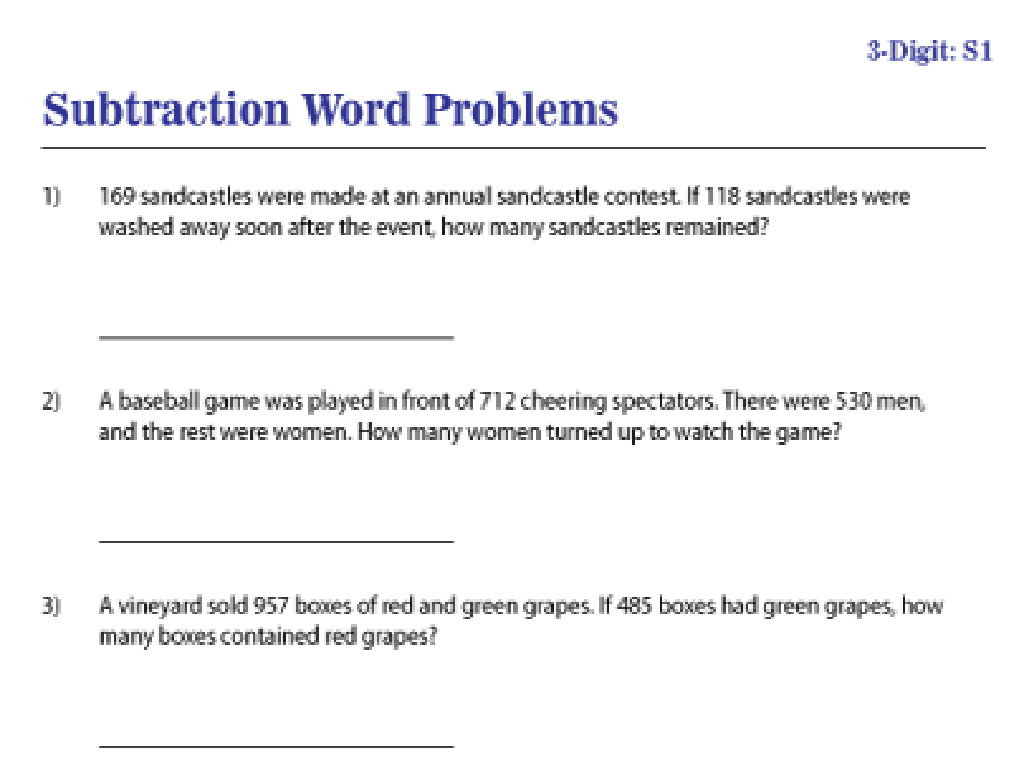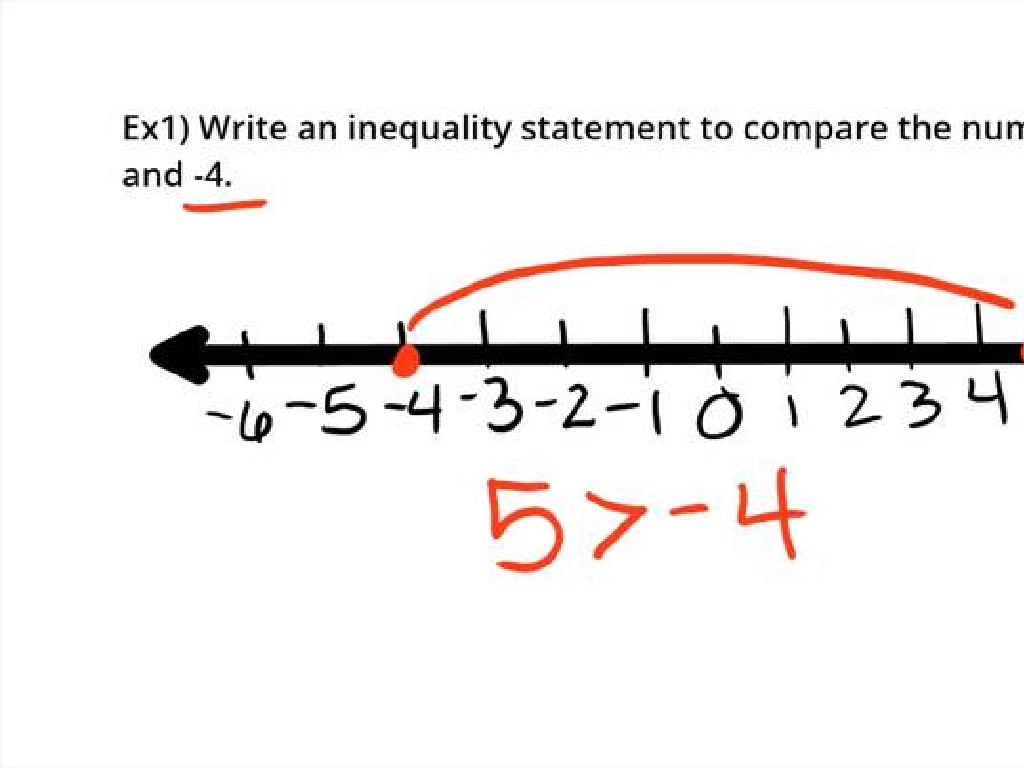Use The Progressive Verb Tenses
Subject: Language arts
Grade: Sixth grade
Topic: Verb Tense
Please LOG IN to download the presentation. Access is available to registered users only.
View More Content
Exploring Progressive Verb Tenses
– Welcome to Language Arts!
– Understanding verb tenses
– Verb tenses show when an action happens
– Defining progressive verb tenses
– Progressive tenses describe ongoing actions
– Usage of progressive tenses
– They are formed with ‘to be’ verbs and present participles
|
This slide introduces the concept of progressive verb tenses to the sixth-grade Language Arts class. Begin with a warm welcome and an affirmation of the importance of understanding verb tenses for effective communication. Explain that verb tenses indicate the timing of actions. Progressive verb tenses specifically highlight actions that are currently ongoing or were/will be ongoing in the past or future. Emphasize the structure of progressive tenses, which combine a form of the ‘to be’ verb (am, is, are, was, were) with the present participle of the main verb (ending in -ing). Provide examples for each tense: present progressive (I am walking), past progressive (I was walking), and future progressive (I will be walking). Encourage students to think of actions they do every day and how they would describe them using progressive tenses.
Understanding Verbs: The Action Words
– Define what a verb is
– A verb is a word that expresses an action, occurrence, or state of being.
– Verbs represent actions
– Actions like ‘run’, ‘jump’, and ‘think’ show what the subject does.
– Verbs in sentence examples
– ‘She sings beautifully.’ or ‘The cat sleeps on the chair.’
– Practice identifying verbs
|
This slide introduces the concept of verbs to the students, emphasizing their role as action words in sentences. Begin by defining a verb and explaining that it can show actions, occurrences, or states of being. Use clear and relatable examples to illustrate verbs in action. Encourage students to come up with their own examples of verbs from their daily activities. Then, show sentences where verbs are used and have students identify the verbs. This will help them understand how verbs function within the context of a sentence. As an activity, students can work in pairs to find verbs in their favorite books or songs, reinforcing the lesson through practical application.
Understanding Present Progressive Tense
– Forming present progressive tense
– Combine ‘am’, ‘is’, ‘are’ with the verb’s ‘-ing’ form
– Use ‘am’, ‘is’, ‘are’ with verbs
– ‘I am’ for ‘I’, ‘is’ for he/she/it, ‘are’ for you/we/they
– Examples of present progressive
– ‘I am eating.’, ‘She is running.’, ‘They are studying.’
|
The present progressive tense is used to describe actions that are currently ongoing. It is formed by using the auxiliary verbs ‘am’, ‘is’, or ‘are’ followed by the main verb in its ‘-ing’ form. This tense is important for expressing actions that are happening at the moment of speaking. For example, ‘I am eating’ means the action of eating is happening now. It’s crucial to match the correct form of ‘to be’ with the subject. Provide students with additional examples and encourage them to create sentences using the present progressive tense to describe actions they see in the classroom or at home.
Understanding Past Progressive Tense
– Forming past progressive tense
– Combine ‘was’ or ‘were’ with the verb’s ‘-ing’ form
– Use ‘was’ or ‘were’ with verbs
– ‘Was’ with ‘I’, ‘he’, ‘she’, ‘it’; ‘were’ with ‘you’, ‘we’, ‘they’
– Examples of past progressive
– ‘I was eating when you called.’, ‘They were playing before it rained.’
|
The past progressive tense is used to describe actions that were in progress at a specific moment in the past. It is formed by using ‘was’ or ‘were’ followed by the verb with an ‘-ing’ ending. ‘Was’ is used with singular subjects, while ‘were’ is used with plural subjects. Provide students with clear examples, such as ‘I was eating when you called,’ which shows an action interrupted by another action. Encourage students to create their own sentences using past progressive tense to describe actions that were happening when something else occurred.
Future Progressive Tense
– Forming future progressive tense
– Combine ‘will be’ with the verb’s ‘-ing’ form
– Use ‘will be’ with verbs
– It shows an action will be in progress in the future
– ‘I will be eating dinner at 7 PM.’
– Example shows action at a specific future time
– ‘She will be studying all night.’
– This example shows duration of future action
|
The future progressive tense is used to describe actions that will be in progress at a specific point in the future. It is formed by using ‘will be’ followed by the present participle of the verb (the ‘-ing’ form). For example, ‘I will be eating dinner at 7 PM.’ indicates that the action of eating dinner is going to happen in the future and will be ongoing at 7 PM. Similarly, ‘She will be studying all night.’ implies that the studying will take place in the future and will continue for the duration of the night. Encourage students to think of actions they plan to do in the future and to practice forming sentences in the future progressive tense.
The Role of Progressive Tenses
– Indicate ongoing actions
– Actions happening now, e.g., ‘She is running.’
– Set scenes in stories
– Describe background activity, e.g., ‘The sun was setting.’
– Show future plans/actions
– Express planned events, e.g., ‘I am meeting her tomorrow.’
|
Progressive verb tenses are essential in English as they help to express actions that are currently in progress, set the background or scene in storytelling, and indicate future plans or actions. When using progressive tenses, the verb form ‘to be’ is combined with the present participle (the -ing form of the verb). It’s important for students to understand that these tenses are not just for actions that are physically happening but can also be used to describe less tangible ongoing situations, such as growing up. Additionally, progressive tenses can be used to talk about future arrangements that have already been planned or decided. During the lesson, provide students with various examples and have them practice forming sentences using progressive tenses to describe actions in different contexts.
Practice Time: Mastering Progressive Tenses
– Identify progressive tenses in sentences
– Look for ‘am’, ‘is’, ‘are’, ‘was’, ‘were’ followed by a verb ending in ‘-ing’.
– Fill in the blanks with correct tense
– Use context to determine present, past, or future progressive.
– Group activity: crafting sentences
– Work together to make sentences using different progressive tenses.
|
This slide is designed for a hands-on practice session on progressive verb tenses. Start by explaining the structure of progressive tenses and how they are used to indicate ongoing actions. Students should look for helping verbs like ‘am’, ‘is’, ‘are’, ‘was’, and ‘were’ followed by verbs ending in ‘-ing’. For the fill-in-the-blanks exercise, provide sentences with missing verbs and have students determine the correct form based on the context. The group activity encourages collaboration and creativity, as students create their own sentences using various progressive tenses. This will help solidify their understanding of how these tenses function within different contexts. Provide guidance and examples as needed, and ensure each group shares their sentences with the class to foster a collaborative learning environment.
Class Activity: Progressive Tense Skit
– Form groups for skit creation
– Use all three progressive tenses
– Include past, present, and future progressive
– Present your skit to the class
– Discuss the impact of progressive tenses
– Reflect on how tenses affect the skit’s meaning
|
This activity is designed to help students understand and apply progressive verb tenses in a practical and engaging way. Divide the class into small groups and instruct them to write a short skit that incorporates past, present, and future progressive tenses. Each group will then present their skit to the class, providing an opportunity for performance and public speaking practice. After all presentations, lead a discussion on how the use of different progressive tenses changed the context and meaning of their skits. This will deepen their understanding of verb tenses and their impact on language. Possible variations for the skits could include everyday scenarios, historical events, or future predictions to make the activity more dynamic and interesting.
Wrapping Up: Progressive Verb Tenses
– Recap progressive verb tenses
– Review past, present, future progressive
– Why correct tenses matter
– Communicates time & action accurately
– Homework: A story with tenses
– Include past, present, future progressive
– Share your stories next class
|
As we conclude, remind students of the structure and use of the past, present, and future progressive tenses. Emphasize the importance of using the correct verb tenses to clearly communicate when an action is occurring. For homework, students will write a short story that incorporates all three progressive tenses, demonstrating their understanding of how each tense contributes to the timeline of a narrative. Encourage creativity and the use of descriptive verbs. In the next class, students will have the opportunity to share their stories and discuss the different tenses used. This will help reinforce their knowledge and allow for peer learning.






